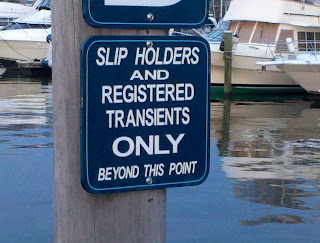 |
| 1928 Ford Tri-Motor at the Frederick Municipal Airport |
My son and I went to the airport to look at the aircraft and ended up paying for two seats on the aircraft. The cost for an adult is $75 and for children under 17 it is $50. It is free to fly with a child under 2 years of age. Yes, it is pricy, but how often do you get this opportunity to share this type of experience with your children.
We were the first to enter the aircraft so we sat in front. The aisle is very narrow but passable. We were
 |
| Inside of the 1929 Ford Tri-Motor |
After the short taxi to runway 23 up into the air we went. The total time for taxing, takeoff, flight, landing, and taxing is about 20 minutes. The cruising speed is 90 mph which in modern terms may seem slow but this was fast for 1929. For an added enjoyment it just so happens that the flight path took us over our house. This added just one more fine touch to the experience. We landed and made it back to the loading / unloading area, deplaned, and took some pictures.
 |
| The cockpit of the 1929 Ford Tri-Motor |
If you are interested in either seeing the plane and its history or taking a ride please take a look at the website www.flytheford.org/ for the upcoming tour locations and dates. If you are looking for possibly a once in a lifetime activity for the family or just yourself then the EAA tour is something it check out. It will be visiting the following cities through the middle of November 2013 (but please check the website in case there are changes):
Manassas, VA
Wichita, KS
Newton, KS
Oklahoma City, OK
Myrtle Beach, SC
Fort Worth, TX
Monroe, NC
Columbia, SC
St. Simons Island, GA
Georgetown, TX
Savannah, GA
Jacksonville, FL
Note to self: As I learned after the flight I had asked my 3 year old son "Do you want to go for a ride?" And of course he said yes. At the age of 3 he has logged a number of hours flying commercial; however, I should have asked if he wanted to go fly. I think he took "ride" to mean driving around the airport. After we landed he said he didn't understand why we left the ground. I laughed to myself and this experience and his comment is one that I won't soon forget.
















